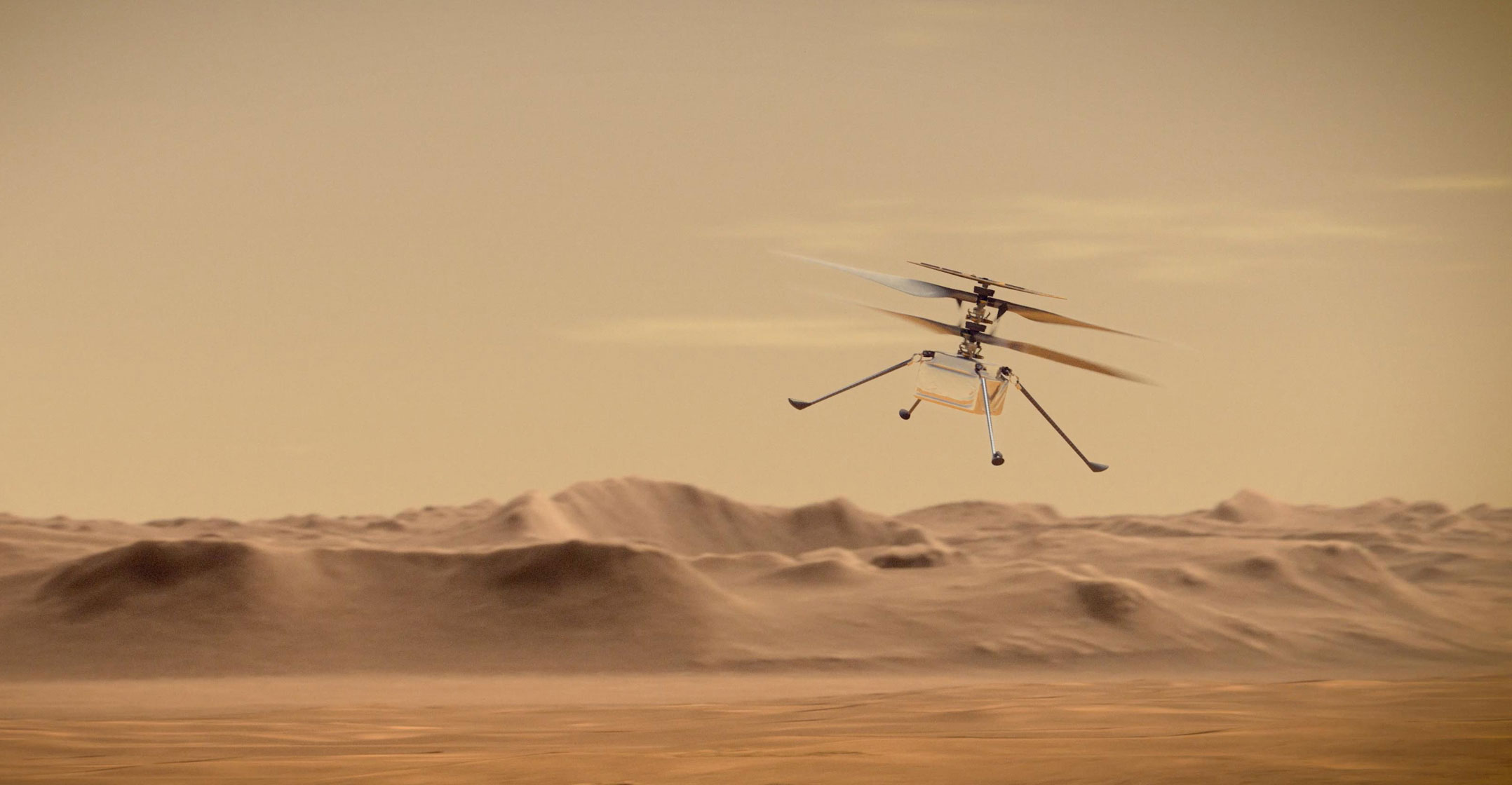
Nasa conducted its first flight on another planet on Monday. It was a short hop for a small chopper named Ingenuity but it demonstrated technology that could prove critical to the future of space exploration.
The 1.8kg vehicle ascended to about 3m above the surface of the red planet for about 40 seconds, before descending back to the ground.
The helicopter arrived on Mars along with the Perseverance rover on 18 February in a dramatic, high-definition landing. As the US and other nations prepare to return humans to the moon, and eventually land on Mars, using drones to closely assess the surrounding landscape will become ever-more important.
“We now have our Wright brothers moment,” MiMi Aung, project manager for Ingenuity, said on Monday morning from a control room at Nasa’s Jet Propulsion Laboratory in Pasadena, California. “This is just the first great flight.”
Researchers at JPL have planned four more Ingenuity flights during the mission to demonstrate the technology’s viability in the thin Martian atmosphere, a hostile environment to craft that require air for lift (the Martian atmosphere is 100 times thinner than that of Earth).
Indeed, flying close to the surface of Mars is the equivalent of flying at more than 26.5km on Earth, essentially three times the height of Mount Everest, Nasa engineers said. The altitude record for a helicopter flight on earth is 12.5km.
Blade rotation
Made up mostly of carbon dioxide, the less-dense atmosphere requires blade rotation speeds of 2 400rpm for the chopper to remain aloft — five times what’s needed on Earth. Researchers also had only an estimate of what kind of wind speed to expect, which was around 21km/h.
Each subsequent test will be “higher risk” and up to 4.5m above the surface because “we want to stretch and understand the capability of this little vehicle,” Aung said. The longest flight will last no more than 90 seconds.
The effort saw a one-week delay because of a glitch discovered on 9 April during a high-speed rotor test, which prevented the helicopter from transitioning into flight mode. Engineers uploaded a solution to that problem on 16 April.
Watch Ingenuity’s first flight on Mars:
JPL programme managers warned that Ingenuity’s later flights come with a fair chance of ending the mission entirely, given the increased probability of a crash landing. The small craft has no way to right itself if it lands askew and not on its four legs.
“This is all about the future — this is the pathfinder,” Aung said at a news conference on 9 April. One of the test mission’s objectives is to return data “to inform future generations of helicopters for Mars”, she said.
Since the Apollo missions introduced rovers to the Moon’s surface, surface exploration has remained at ground level. Over time, drone flights could allow exploration of inaccessible, rocky terrain or to scan cliffs and other geological futures too treacherous for rovers — or humans.
Nasa began concept-testing its off-world aviation experiment in 2014, and has conducted extensive vacuum chamber testing to understand the complexity of flight on Mars, where it’s very cold by terrestrial standards, dipping to -90ºC at night. But Ingenuity is only the beginning.
The agency’s Dragonfly mission to Saturn’s moon Titan is scheduled for a 2027 launch, with arrival to occur about eight years later. The larger rotorcraft will fly more than 160km on the icy moon, collecting samples at multiple locations.
Own challenges
While Titan’s nitrogen-heavy, complex atmosphere will be an easier place to fly than Mars when it comes to aerodynamics, methane rain and super extreme cold of -180ºC will present their own challenges.
Ingenuity and its progeny must be largely autonomous given the lag in communications from Earth, which is 290 million kilometres away. Nasa eventually found itself purchasing two US$750 commercial chipsets for the drone flights that were developed by Qualcomm, since the platform offered the helicopter more robust computing with lower power usage than Nasa’s existing technology.
Ingenuity has two cameras, one for navigation, the other for terrain photography, and must connect wirelessly with Perseverance to relay its imagery to an overhead Mars orbiter and back to Earth. The chips also must accept flight profiles sent from JPL pilots. — Reported by Justin Bachman, (c) 2021 Bloomberg LP

